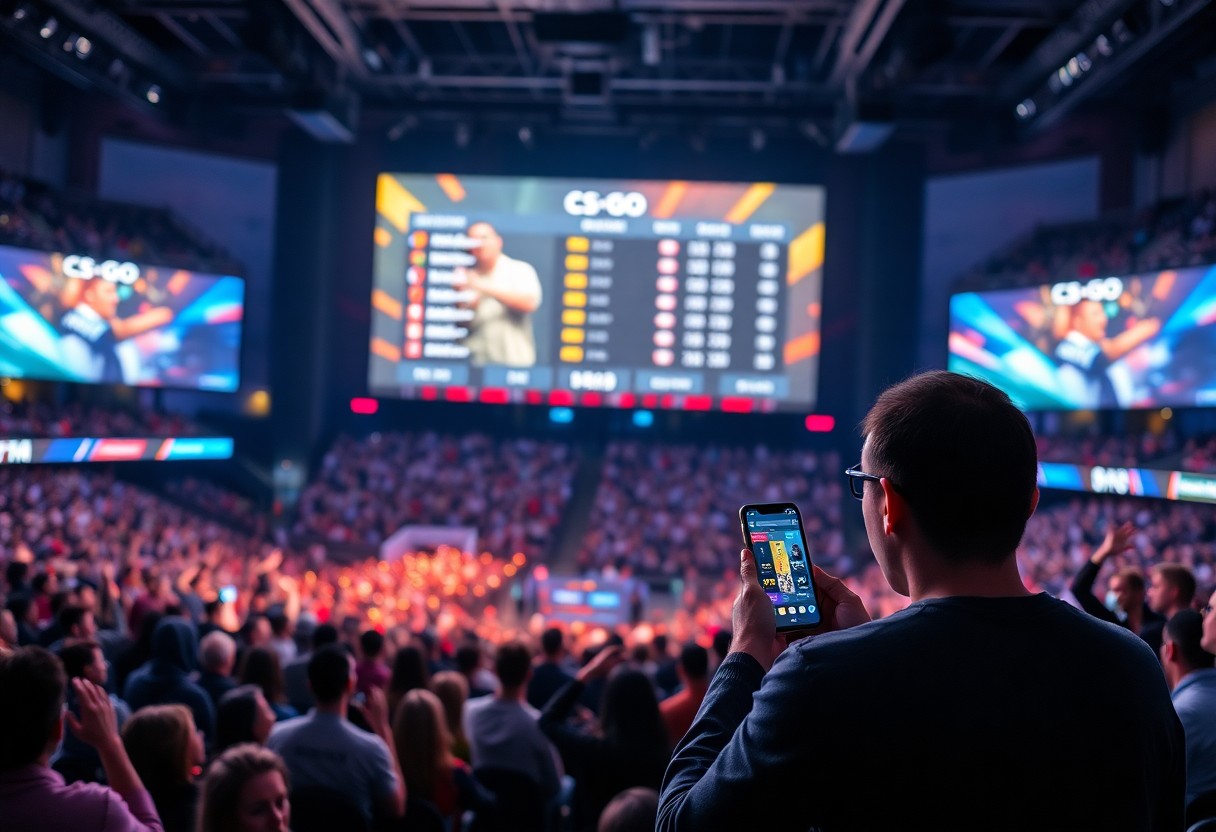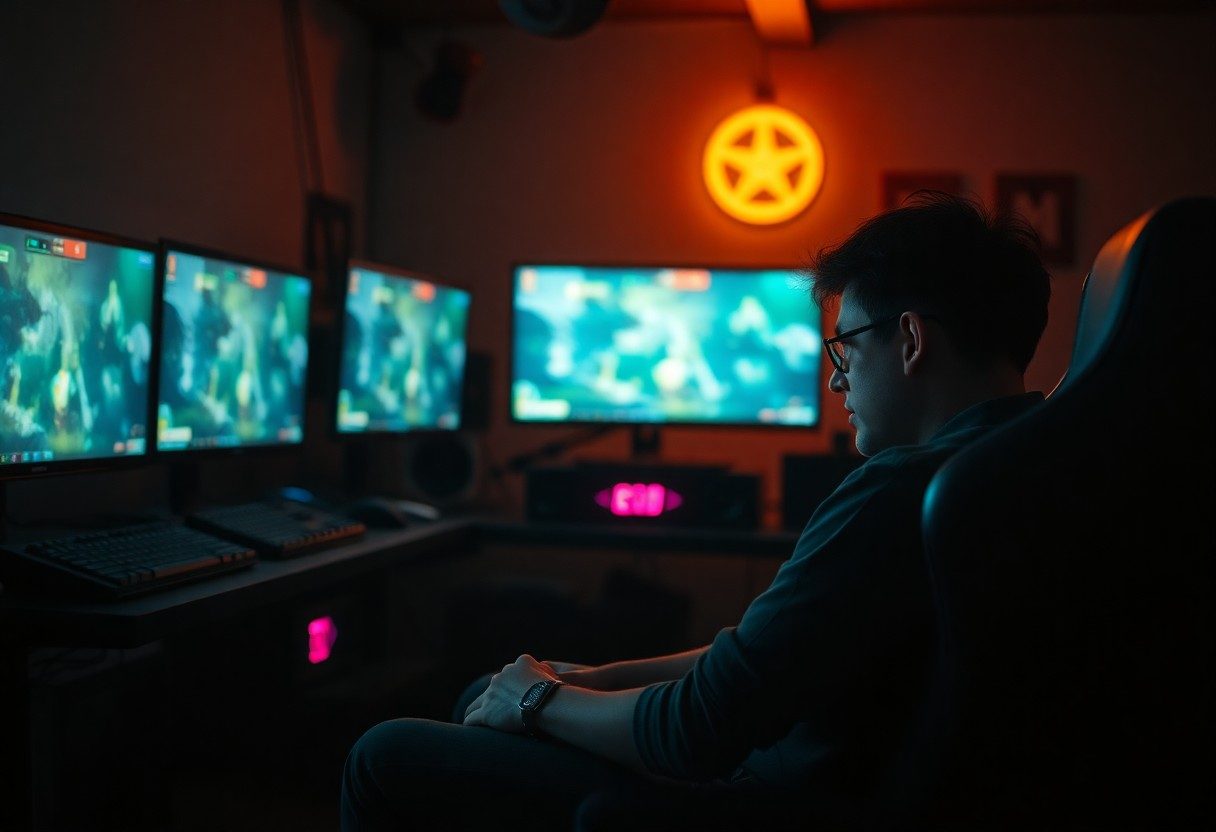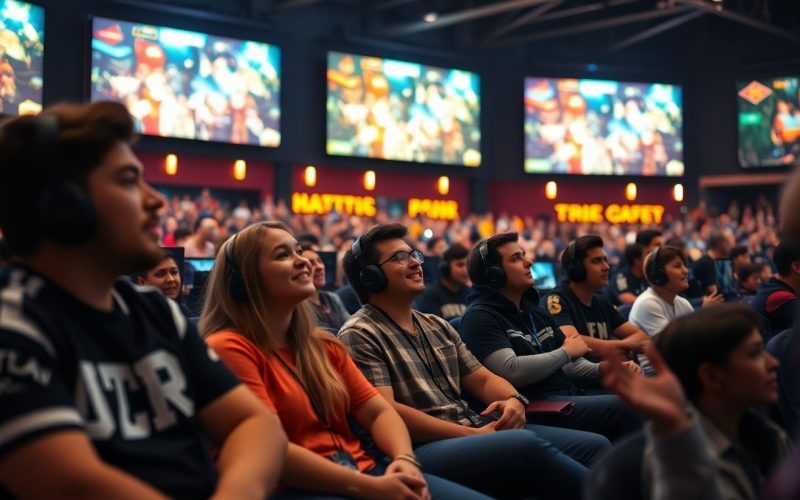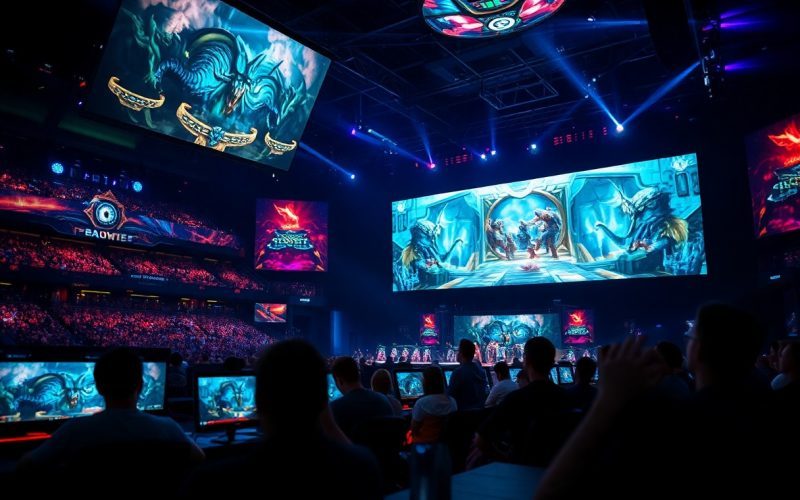It’s a growing concern within the gaming community: esports burnout. As competitive gaming gains popularity, players often face intense pressure to perform at their best, leading to discussions about the mental and physical toll it takes. This phenomenon is characterized by exhaustion, decreased motivation, and increased irritability, raising questions on whether it’s a genuine issue or merely an overinflated narrative. In this post, we will explore the signs, causes, and implications of esports burnout, shedding light on its validity and how players and organizations can address it effectively.
Understanding Esports Burnout
Definition and Symptoms
Symptoms of esports burnout can manifest in various ways, impacting both mental and physical well-being. Players may experience increased fatigue, emotional exhaustion, and a lack of motivation to compete. This state of burnout can also lead to decreased performance, as individuals no longer exhibit the enthusiasm or energy that originally fueled their passion for gaming. Additionally, feelings of frustration or even depression can arise, making it challenging to find enjoyment in the games they once loved.
Furthermore, cognitive symptoms are also significant indicators of burnout. Players may struggle with focus, decision-making, and strategic thinking, which are all important components in a competitive gaming environment. Consequently, the inability to perform at one’s usual level can result in a downward spiral, perpetuating feelings of inadequacy and increasing stress. Understanding these symptoms is vital for athletes and those around them, as early identification can lead to more effective coping strategies and support systems.
Causes of Burnout in Esports
Burnout in esports is often triggered by a combination of high expectations, intensive training schedules, and the pressure to succeed within a highly competitive environment. The commitment required to excel in esports is immense, with players frequently dedicating long hours to practice, scrims, and tournaments. This relentless pace can lead to physical and emotional depletion, making it difficult for gamers to maintain their passion and motivation over time.
Even the culture surrounding esports can exacerbate the risk of burnout. The pervasive demand for constant improvement and the pressure from fans and sponsors can create an atmosphere where players feel they must push beyond their limits. Social comparisons to peers and the fear of being replaced can further contribute to an unhealthy mindset. As the industry evolves, recognizing and addressing these contributing factors will play an important role in fostering sustainable career paths for esports athletes.
The Reality of Esports Burnout
If you examine the competitive nature of esports, it becomes evident that the pressure to perform at the highest level can rapidly lead to burnout amongst players. Many professional esports athletes dedicate countless hours to practice, streaming, and attending tournaments, often neglecting their mental health and personal lives in the process. As a result, the phenomenon known as esports burnout has risen to prominence, drawing both awareness and skepticism from within the gaming community.
Case Studies and Personal Accounts
An increasing number of esports players have come forward with personal experiences that highlight the impacts of burnout on their careers. Through various interviews and social media accounts, these players provide a candid view of the challenges they face, contributing to an understanding of this pervasive issue.
- Player A: Ranked among the top 10 in his region, Player A reported a 70% decrease in his performance after 6 months of intense training and competition, ultimately leading to a hiatus.
- Player B: A former professional gamer, Player B shared that after three years at the top level, they experienced significant emotional distress, resulting in a 50% drop in their engagement with competitive gaming.
- Team X: Conducted a study on their roster, finding that 65% of players expressed feelings of burnout during seasonal tournaments, which they linked to long training hours and limited downtime.
- Player C: A rising star who burned out after intense scrutiny from fans and media, stated that their motivation plummeted by 80%, leading to a temporary retirement.
Statistical Analysis of Burnout Rates
Statistical data reveals a vivid picture of burnout rates among esports professionals. Various surveys indicate that a significant percentage of players have experienced some form of burnout throughout their careers, underscoring the need for improved mental health support and resources.
For instance, a recent survey conducted among over 500 esports players found that nearly 60% reported feelings of extreme fatigue and disinterest in gaming during peak competition seasons. Additionally, 45% acknowledged struggling with anxiety and depression due to the immense pressure of competing at high levels. These figures suggest that burnout is a substantial concern that warrants attention from teams, organizations, and stakeholders in the esports industry.
The Debate: Real vs. Exaggerated
Clearly, the conversation around esports burnout has gained significant traction in recent years, sparking debates among players, coaches, and industry professionals alike. On one side, there are those who assert that mental and physical fatigue among pro gamers is an inevitable outcome of the high-pressure, competitive environment. This perspective highlights the intensive training schedules, the emotional toll of constant competition, and the unyielding demands from sponsors and fan expectations. Proponents argue that such factors can lead to debilitating burnout, affecting not only the players’ performance but also their overall mental health.
On the other hand, critics claim that the narrative of esports burnout is exaggerated, often used as a catch-all explanation for underperformance or poor results. They suggest that while burnout can occur, it is not representative of the broader esports community, where many players maintain a healthy work-life balance and enjoy their craft. This perspective emphasizes personal accountability and suggests that with proper training regimens and coping mechanisms, players can thrive in high-stress environments.
Perspectives from Players and Coaches
Real anecdotes from players and coaches paint a vivid picture of the mental and emotional strain accompanying high-stakes gaming. Many professional players report experiencing extreme pressure during major tournaments, leading to anxiety and fatigue that can compromise their performance. Coaches, who often bear the responsibility of guiding these athletes, have noted that a player’s mental state can significantly influence the entire team’s dynamics. Some coaches advocate for mental health resources and periodic breaks from the game to combat burnout, recognizing that maintaining a healthy mindset is vital for long-term success.
This sentiment resonates strongly among those who have experienced the highs and lows of competitive gaming. Players often describe the relentless grind—entailing hours of practice, scrimmages, and analysis—that can strip away the joy from gaming, leaving them feeling drained. In some cases, these players have sought help in the form of therapy or peer support networks, illustrating the tangible effects of burnout and the need for open discussions within the gaming community.
Counterarguments from Industry Experts
Against the backdrop of personal experiences shared by players, industry experts often present counterarguments that suggest such claims may not represent the entirety of the esports landscape. They argue that burnout, while a legitimate concern for some, may be overstated and can overshadow the thriving aspects of competitive gaming environments. Experts contend that many players adapt to the pressures of esports fairly well and can manage their commitments without severe repercussions to their mental health.
A growing body of research indicates that the phenomenon of burnout in gaming can often be mitigated through effective time management, support systems, and mental resilience training. Furthermore, industry professionals emphasize that successful organizations often prioritize player wellness, offering resources that help in managing stress and expectations. This perspective suggests that the narrative of burnout should be contextualized within individual experiences rather than generalized to an entire population of players, highlighting that many can successfully navigate the challenges of competitive gaming without succumbing to burnout.
Prevention and Management Strategies
Unlike traditional sports, the fast-paced and often digital nature of esports can create unique challenges for players regarding burnout. Integrating effective prevention and management strategies is important to ensure that players remain at their optimal performance levels while also maintaining their overall well-being. One proactive approach is the establishment of structured schedules that balance practice, competition, and personal time. Incorporating regular breaks and downtime can help players recharge, both mentally and physically, thereby reducing the risk of burnout. Coaching staff and organizations also have a role to play by fostering a culture of open communication, allowing players to express their concerns and feelings without fear of stigma.
Additionally, implementing wellness programs that address mental and physical health can significantly enhance players’ endurance in the face of stressors associated with competitive gaming. Access to mental health resources, such as counseling and therapy, can empower players to address their challenges head-on, making it easier for them to manage their emotions and stress levels. Organizations can work towards creating a supportive environment that prioritizes mental health through workshops, educational resources, and monitoring the players’ well-being on an ongoing basis.
Mental Health Resources
Before launching on a journey through esports, players need to recognize the significance of mental health resources. Access to specialized mental health support can significantly contribute to the long-term success and happiness of esports athletes. Organizations should actively promote mental health awareness, encouraging players to utilize services such as therapy, helplines, and mental wellness workshops. Such initiatives can help cultivate a culture that values mental well-being and provides athletes with the tools needed to stay resilient amidst the pressures of competition.
Lifestyle Adjustments for Players
Lifestyle changes can play an important role in reducing the likelihood of burnout among esports players. Adopting healthier eating habits, implementing regular physical exercise, and ensuring sufficient sleep can greatly improve cognitive function and emotional resilience. Players should also prioritize mindfulness practices such as meditation or yoga, which can assist with stress management and focus. By creating a well-rounded lifestyle that balances gaming with healthy routines, players can enhance their overall performance and significantly decrease feelings of fatigue and burnout.
Mental well-being is significantly impacted by lifestyle choices, and for esports players, this can mean much more than just playing the game. Regular physical activity, for instance, has been shown to boost mood and increase energy levels, making it an excellent counterbalance to the sedentary nature of gaming. Furthermore, ensuring a proper diet filled with nutrients can enhance cognitive function, enabling players to make quicker, more effective decisions during gameplay. Incorporating social interactions, whether through team bonding or recreational activities outside of gaming, can foster a supportive environment that helps players thrive both in and out of the virtual field.
The Role of Organizations and Sponsors
Once again, the spotlight turns to the responsibility of organizations and sponsors in addressing esports burnout. The gaming industry has rapidly evolved, with organizations now playing a pivotal role not only in training and competition but also in ensuring the holistic well-being of their players. This includes being aware of the pressures that come with high-level competition and the mental toll that a rigorous schedule can impose. While sponsorships can provide significant resources for player development and team success, they also come with expectations that can contribute to stress and burnout if not managed properly.
Supporting Player Well-being
One imperative aspect of fostering a healthier environment in esports is the proactive support of player well-being by organizations and sponsors. This involves taking steps such as implementing mental health resources, offering flexible schedules, and encouraging players to develop their interests outside of gaming. By prioritizing a player’s mental and emotional health, organizations can mitigate the risk of burnout, promote longevity in competitive gaming, and ultimately enhance team performance. Engaging with mental health professionals and establishing a culture of openness can empower players to voice their concerns and seek help when needed.
Initiatives to Combat Burnout
An increasing number of organizations are recognizing the necessity of implementing initiatives specifically designed to combat burnout among players. These initiatives can range from mandatory breaks during intensive training periods to creating workshops that focus on time management and mental resilience. As the industry matures, it has become increasingly evident that a fostering environment is vital for sustaining not only individual well-being but also the overall success of teams and tournaments.
Organizations are also beginning to collaborate with psychologists and wellness experts to develop comprehensive programs that encourage a balanced approach to competition. This may include regular check-ins on player mental health, providing access to counseling services, and promoting a culture where resting and recovery are seen as vital components of a professional athlete’s routine. By investing in these initiatives, organizations can build a more sustainable future in esports, where players are equipped to perform at their best without compromising their health. The long-term implications of such efforts can lead to higher retention rates, better performances, and a more positive public image for the organizations involved.
Future Outlook on Esports and Burnout
For the esports community to thrive, it is important to address and understand the issue of burnout among players. As the industry continues to grow rapidly, the nature of competitive gaming intensifies, putting more pressure on players to perform at their peak. This mounting pressure, combined with the ever-increasing demands of fans and sponsors, can lead to detrimental mental health issues if not managed properly. Looking ahead, the industry will likely focus on developing structured support systems and implementing policies aimed at safeguarding player well-being, ensuring that their careers can be sustainable in the long term.
For many upcoming players and existing professionals, the recognition of burnout is fostering an environment where mental health and work-life balance take precedence. Organizations and teams are increasingly acknowledging the importance of mental well-being, integrating measures aimed at promoting healthier lifestyles, reducing strain, and advocating for self-care strategies. The incorporation of mental health professionals in training regimes and an emphasis on rest periods signify a shift in focus that could redefine the landscape of esports in the coming years.
Trends in Player Well-being
On the surface, player well-being has not always been a priority within the esports industry, but recent trends indicate a shift toward recognizing and addressing mental health issues linked to competitive gaming. In response to growing concerns about burnout, several organizations are actively implementing wellness programs that prioritize the holistic development of players. These programs often include mental health support, nutritional guidance, and physical training elements, promoting a more balanced approach to gaming while seeking to enhance overall performance.
On the grassroots level, discussions surrounding player well-being are becoming more prevalent, leading to increased awareness among aspiring gamers. In light of this, educational initiatives aimed at young players are emerging, highlighting the importance of mental health and promoting strategies that can mitigate the inevitable pressures of competition. As these conversations continue to grow, it’s anticipated that the esports industry will cultivate a culture where well-being is aligned with success, reshaping the landscape of competitive gaming.
Evolving Industry Practices
Practices within the esports industry are gradually adapting to address the challenges of player burnout, drawing on lessons learned from traditional sports and the specific needs of gamers. Many organizations are re-evaluating training schedules, implementing regular breaks, and introducing flexible work hours to create a more manageable and supportive environment for players. Additionally, partnerships with mental health experts are becoming more common, offering players access to resources and support systems designed to help them navigate the unique stresses of competitive gaming.
At each level of the esports hierarchy, the emphasis on improving player welfare is evident. Major tournaments and leagues are incorporating policies aimed at reducing the intensity of competition schedules while providing access to wellness resources for participating teams. The drive towards more sustainable practices signifies a collective responsibility, recognizing that the longevity of players’ careers and the overall health of the industry depend on prioritizing mental and emotional well-being. As these evolving practices take root, the esports community can expect to see positive outcomes that benefit everyone involved.
Conclusion
Upon reflecting on the phenomenon of esports burnout, it becomes clear that while some aspects may be exaggerated, the underlying issues contributing to player fatigue and mental strain are very real. The intense competition, rigorous training schedules, and high expectations from both teams and fans can create an environment where stress and pressure thrive. Furthermore, the constant scrutiny within the digital realm can lead to players feeling isolated and overwhelmed. Thus, recognizing and addressing these challenges is necessary for the sustainability of competitive gaming as a profession.
Moreover, fostering a healthy balance between gaming and personal life, and implementing supportive measures from organizations, can help mitigate the effects of burnout. Players, coaches, and stakeholders should actively engage in discussions about mental health and the importance of self-care within the esports community. Ultimately, acknowledging that burnout exists and taking proactive steps to combat it will not only enhance individual well-being but also contribute to the longevity and success of esports as a thriving industry.






